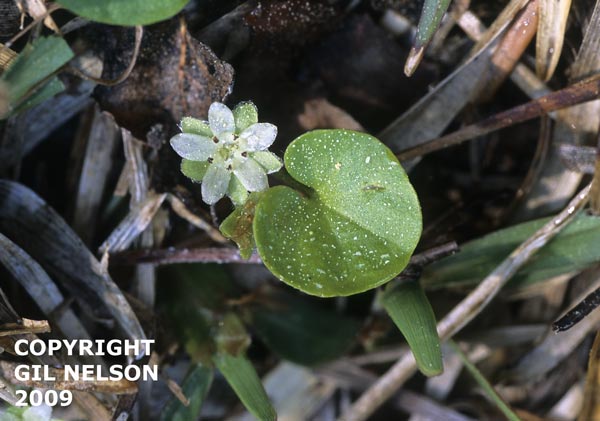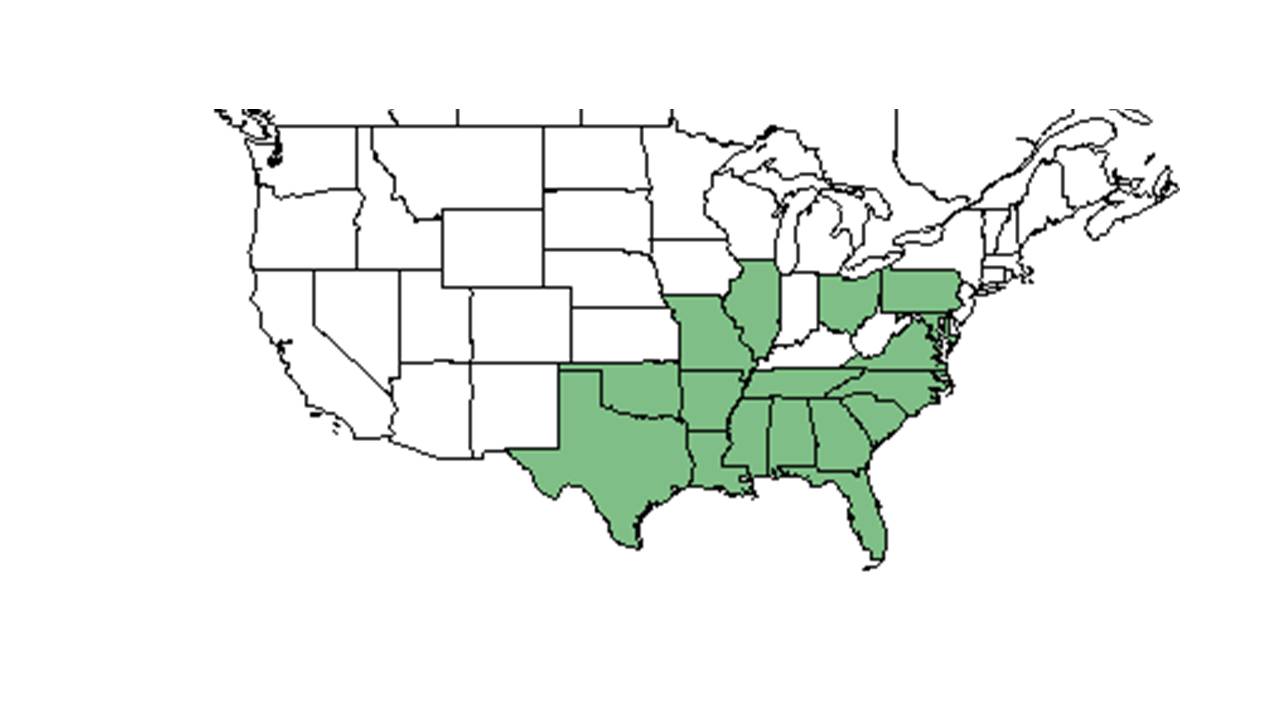Difference between revisions of "Dichondra carolinensis"
| Line 40: | Line 40: | ||
===Phenology=== <!--Timing off flowering, fruiting, seed dispersal, and environmental triggers. Cite PanFlora website if appropriate: http://www.gilnelson.com/PanFlora/ --> | ===Phenology=== <!--Timing off flowering, fruiting, seed dispersal, and environmental triggers. Cite PanFlora website if appropriate: http://www.gilnelson.com/PanFlora/ --> | ||
| − | General flowering time of this species is between March and May.<ref name= | + | General flowering time of this species is between March and May.<ref name=weakley/> ''D. carolinensis'' has been observed flowering January to May, with peak inflorescence in February, and has been observed fruiting in March.<ref name=fsu/><ref>Nelson, G. [http://www.gilnelson.com/ PanFlora]: Plant data for the eastern United States with emphasis on the Southeastern Coastal Plains, Florida, and the Florida Panhandle. www.gilnelson.com/PanFlora/ Accessed: 8 DEC 2016</ref> |
===Seed dispersal=== | ===Seed dispersal=== | ||
Latest revision as of 19:30, 25 May 2023
| Dichondra carolinensis | |
|---|---|

| |
| Photo taken by Gil Nelson | |
| Scientific classification | |
| Kingdom: | Plantae |
| Division: | Magnoliophyta - Flowering plants |
| Class: | Magnoliopsida – Dicotyledons |
| Order: | Solanales |
| Family: | Convolvulaceae |
| Genus: | Dichondra |
| Species: | D. carolinensis |
| Binomial name | |
| Dichondra carolinensis Michx. | |

| |
| Natural range of Dichondra carolinensis from USDA NRCS Plants Database. | |
Common name: Carolina ponyfoot
Contents
Taxonomic notes
Synonym: Dichondra repens J.R. Forster var. carolinensis (Michaux) Choisy[1]
Varieties: none[1]
Description
Dichondra carolinensis is a perennial herbaceous species with a ruderal growing habit.[2]
For D. carolinensis, they are a "prostrate, spreading or matted, pubescent perennial, rooting at the nodes. Leaves suborbicular to reniform, mostly 1-3 cm wide, sparsely pubescent beneath; petioles 1-4 cm long. Flowers small, axillary, solitary; sepals 2-3 mm long at anthesis, the outer surface pilose; corolla white, rotate-campanulate exceeded by the calyx; pistil of 2 nearly separate carpels, stigmas capitate, styles separate. Capsule 2-lobed, each lobe usually 1-seeded." [3]
Distribution
D. carolinensis is native from southeast Virginia south to southern Florida, and west to Arkansas and Texas. It is also in Bermuda and reported in the Bahamas, and can sometimes be adventive beyond this range.[4]
Ecology
Habitat
Generally, D. carolinensis can be found in disturbed areas like lawns and roadsides as well as most pinelands.[1] This species prefers dry loamy sand and high light levels. It occurs in several natural communities, including pine-oak woods and savanna. However, it also tends to be a ruderal species, appearing in disturbed habitat like mowed lawns and roadsides.[2]
Associated species include Viola primulifolia, Cerastium Linaria, Oxalis.[2]
Phenology
General flowering time of this species is between March and May.[1] D. carolinensis has been observed flowering January to May, with peak inflorescence in February, and has been observed fruiting in March.[2][5]
Seed dispersal
This species is thought to be dispersed by gravity.[6]
Fire ecology
D. carolinensis has been found in annually burned savanna, so it has some fire tolerance.[2]
Conservation, cultivation, and restoration
Cultural use
Photo Gallery
References and notes
- ↑ 1.0 1.1 1.2 1.3 Weakley, A.S. 2020. Flora of the Southeastern United States. Edition of 20 October 2020. University of North Carolina at Chapel Hill, Chapel Hill, North Carolina.
- ↑ 2.0 2.1 2.2 2.3 2.4 Florida State University Robert K. Godfrey Herbarium database. URL: http://herbarium.bio.fsu.edu. Last accessed: June 2014. Collectors: Loran C. Anderson, R. K. Godfrey, Lisa Keppner, Walter Kittredge, and R. Komarek. States and Counties: Florida: Gadsden, Leon, Liberty, Taylor, and Washington. Georgia: Grady.
- ↑ Radford, Albert E., Harry E. Ahles, and C. Ritchie Bell. Manual of the Vascular Flora of the Carolinas. 1964, 1968. The University of North Carolina Press. 861. Print.
- ↑ Weakley, A. S. (2015). Flora of the Southern and Mid-Atlantic States. Chapel Hill, NC, University of North Carolina Herbarium.
- ↑ Nelson, G. PanFlora: Plant data for the eastern United States with emphasis on the Southeastern Coastal Plains, Florida, and the Florida Panhandle. www.gilnelson.com/PanFlora/ Accessed: 8 DEC 2016
- ↑ Creech, M. N., et al. (2012). "Alteration and Recovery of Slash Pile Burn Sites in the Restoration of a Fire-Maintained Ecosystem." Restoration Ecology 20(4): 505-516.